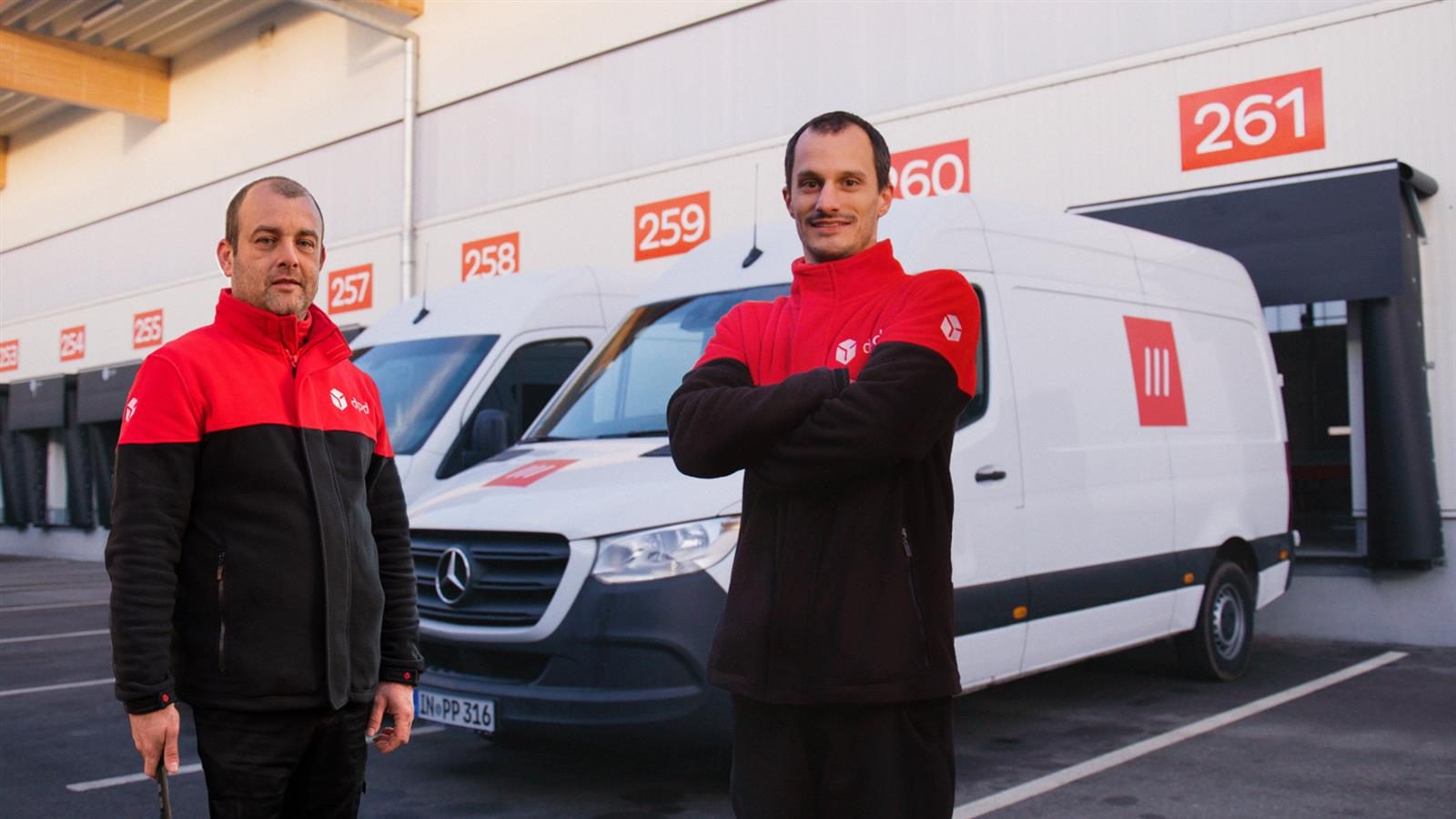Test of Mercedes-Benz Vans, DPD and what3words shows 15% efficiency gain using innovative addressing solution for package delivery

Two professional drivers from DPD, two almost identical Mercedes-Benz Sprinter Vans and what3words teamed up for a special logistics efficiency test in Nagold, Germany. This test was not about acceleration, optimal cornering or engine performance. Instead it aimed to find out whether what3words integrated into the Mercedes-Benz Sprinter on-board navigation system could increase efficiency in package delivery. The test route covered the entire city, and involved about 50 deliveries. Impressively, the results showed an efficiency improvement of 15% for the driver using what3words, compared to the driver using a traditional street address-based navigation system.
What3words is the simplest way to identify precise locations, anywhere in the world. It has divided the world into 3m squares, and given each square a simple and unique address made up of three dictionary words. This includes places where no regular street addresses exist, such as large industrial estates. In 2017, Mercedes-Benz was the world‘s first automotive manufacturer to integrate the ability to search for and navigate to what3words addresses with its on-board MBUX system.
“We are always looking for new ways and means of supporting our drivers in their tasks and increasing the efficiency of our processes,” says Thomas Steverding, senior group manager, OPS Process and Development at DPD. “When we became aware of what3words we wanted to find out whether we could benefit from more precise localisation of the delivery targets using the three-word address.”

Mercedes-Benz Vans, DPD and the UK-based start-up what3words carried out the test to find out how much efficiency can be gained by using built-in navigation to what3words addresses as featured in Mercedes-Benz Sprinter vehicles. The test also included the ability to remotely send what3words locations to the vehicle via push notifications, a feature that is currently under development.
“Street addresses for large sites like factories or exhibition halls rarely point to the delivery entrance, so drivers waste time looking for the right drop-off locations,” said Chris Sheldrick, co-founder and CEO of what3words. “This is frustrating for drivers and adds up to time and fuel inefficiencies for the company, as well as a poor experience for customers who might have late or missed deliveries. what3words‘ precise addressing system helps logistics drivers who are unfamiliar with their delivery area to reduce time spent looking for exact delivery points and, with this particular test, it also gave them the exact parking spot closest to the delivery entrance as well, which is really crucial for last-mile deliveries that are completed on foot.”

The test featured two identical Mercedes-Benz Sprinter, both equipped with MBUX. One had its navigation programmed experimentally using predefined what3words addresses for parking locations and delivery entrances. Both vans were loaded with 50 packages and driven by professional delivery drivers from DPD, who were not familiar with the area. Both drivers were using the same delivery order based on a real, historical route from DPD. The route included inner city and industrial areas and the drop-off points on the route were a combination of 55% B2B customers and 45% B2C customers. The routes were driven under everyday conditions in the Nagold delivery area and started at the usual time. Both drivers adhered to traffic regulations at all times.
What3words helps the driver by providing clear and accurate predefined stopping points for the delivery van, ensuring that the driver parks more strategically and reduces their walking distances. what3words integration into the MBUX system ensures that the driver does not need any additional navigation equipment and the data is seamlessly linked to the navigation.

The test using what3words showed an efficiency gain of around 15%. The driver with what3words was able to end his route more than 30 minutes before his colleague, who used a navigation system with traditional addresses.
The test showed that 80% of the efficiency gain resulted from providing the what3words address for the optimal parking spot. The remaining 20% of the efficiency gain came from having a what3words address for the precise handover point, reducing drivers‘ time on foot.
“The test has shown that the system is a big improvement, especially for new drivers and those who have to work in an unfamiliar delivery area. It also removes a lot of stress from the driver and makes his job much easier. In times when the number of packages is continuously increasing, there is a clear competitive advantage,” said Steffen Raiber, manager Industry Management CEP & Logistics at Mercedes-Benz Vans.
A video of the test is available on YouTube: https://youtu.be/25KyQlBMhHg





